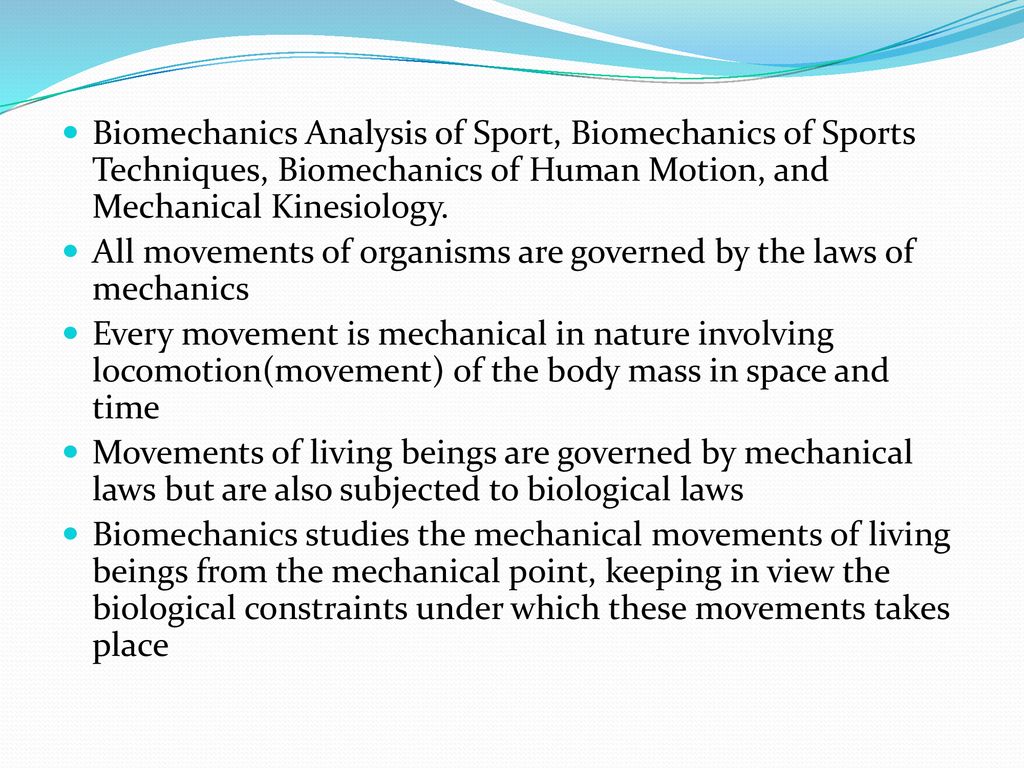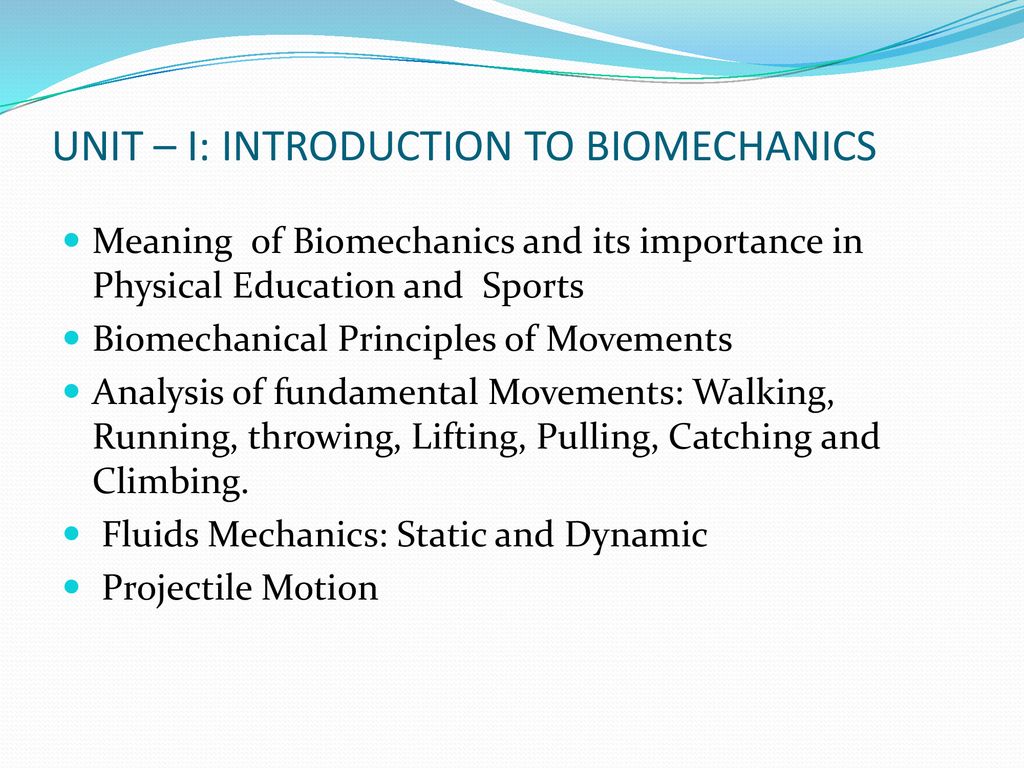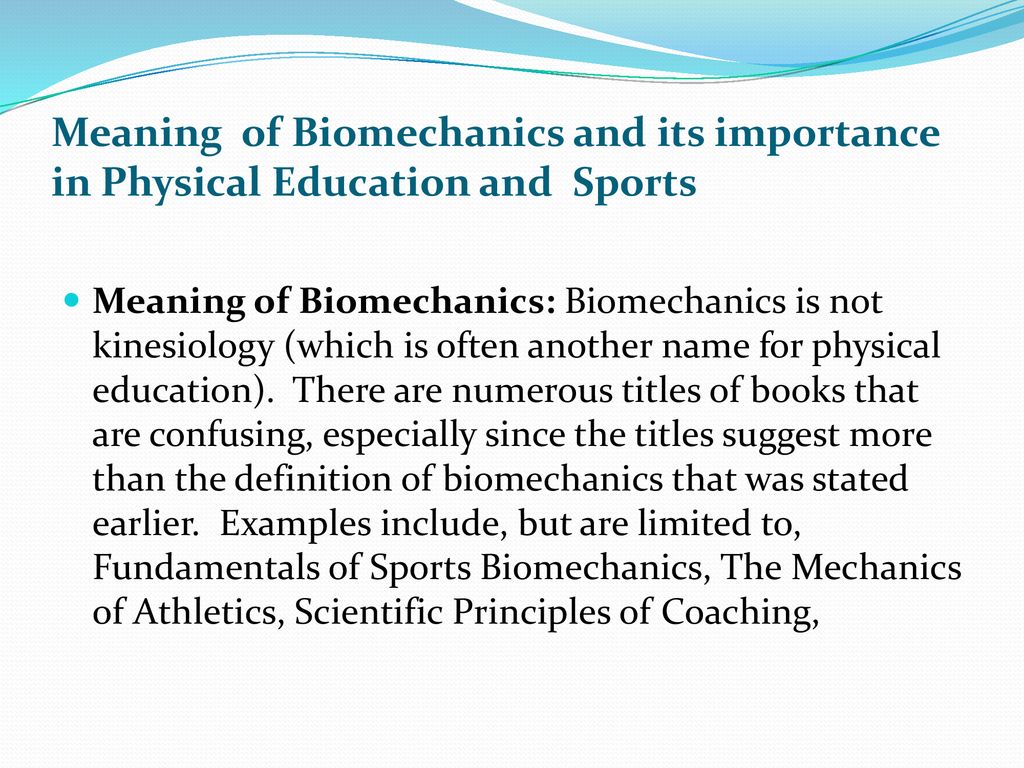Explain the Similarities and Differences Between Biomechanics and Kinesiology
Key Differences Between Kinetics and Kinematics. Professionals in this field might help.

Sports Biomechanics And Kinesiology Ppt Download
Explain basic differences similarities and relationships between the concepts of.

. Determine the effect of internal and external forces upon a given joint and relate those forces to movement specifics 4. Describe posture and movement with respect to reference systems 3. DISTOPRO DiMal-to-proximal sequence of the joint reversals.
It takes into consideration the anatomy physiology psychomotor biomechanics and other details as it relates to motion. Others include motor control physiology physical activity and molecular kinesiology. All of the most beneficial and effective strength exercises are presented and explained in great detail accompanied with illustrations.
An analysis of the component parts of the words reveals kinesiology to mean literally the study of motion and biomechanics to mean the study of the mechanics of life. For a thorough discussion of the differences and their implications in the analysis of the phenomenon see the work by Kompf and Arandjelović is a concept commonly used in the context of weight training 35Broadly speaking it refers to the part of the range of motion ROM in a. Although both the terms sound similar there are a few differences between them.
The body is totally airborne for a period of time during running whereas at least one foot contacts the ground for the whole cycle during walking. Simply put the science of kinesiology aims to study the mechanics behind the human movement. However the study of kinematics never considers the mass of the body.
Biomechanics the study of the mechanical processes of human movement is an aspect of the larger field of kinesiology. Pearsons product-moment correlations were performed for linear foot velocity at impact against both absolute and relative impact forces with a confidence level of 999. Kicking a fundamental motor skill.
Kinesiology is therefore inclusive of the biomechanics of motion and the neural and cardiovascular elements of movement. Kinetics and kinematics are branches in physics that deal with the motion of an object. This includes the forces exerted by both gravity and muscles on the.
Define and apply the basic terminology used in the study of kinesiology biomechanics CAPTE Standard 7A 2. Although there are some similarities between the joints of the upper and the lower extremities the upper extremity is more specialized for activities requiring large ranges of motionIn contrast the lower extremity is well equipped for its functions of weight bearing and locomotionBeyond these basic functions activities such as kicking a field goal in football performing a long jump. The responsibility of experts in this field is to improve human performance and function and dedicate most.
The key difference between kinesiology and biomechanics is that. J Denotes a joint. PTOT 5501 Clinical Kinesiology Biomechanics 1.
Preliminary research also suggests that balance control in the support leg plays a key role in athletes kicking performance. JACCP K Peak joint acceleration during the negative phase. Skill acquisition also referred to as motor learning and control is the interdisciplinary science of intention perception action and calibration of the performer-environment relationship.
A relative measure of the differences between groups was reported based on an ES 02 as negligible ES between 02 and 05 as small 0508 as moderate and 08 as large. Enlist the methods of reducing friction. Define biomechanics kinematics kinetics statics and dynamics.
Biomechanics is concerned with how your body is. Biomechanics is the study of a living body and its mechanics. Kinetics considers the mass of the body as it deals with force and we know F ma thus mass is a major considerable factor in the case of kinetics.
Identify and define planes of motion and axes of movement. All of the most beneficial and effective strength exercises are presented and explained in great detail accompanied with illustrations. Kinesiology addresses physiological biomechanical psychological and dynamic principles and mechanisms of movement.
In particular skill acquisition is an umbrella term specific to the knowledge of and knowledge about what behavioural and neurological variables. An analysis of the component parts of the words reveals kinesiology to mean literally the study of motion and biomechanics to mean the study of the mechanics of life. Applications include applied biomechanics.
The sticking point or sometimes the sticking region. Identify and describe the major mechanical factors that affect stability 4. Also called exercise physiology exercise science might include topics such as strength training sports nutrition and physical education.
Biomechanics is the science which applies the laws of mechanics to biological movement. Methods of reducing friction are. I studied kinesiology in college.
Kinematics desrcibes motion using equations of motion. Kinesiology is the study of movement and biomechanics is only one aspect of that specifically the mechanics of movement. You are swimming a race against your buddy at the pool.
What is Kinesiology. This is the only book that combines elements of biomechanics with kinesiology when describing analyzing and discussing the similarities and differences between various strength exercises. Kinesiology includes a broad range of disciplines such as exercise physiology sport psychology sport sociology motor control and biomechanics.
Answer 1 of 6. Here is an opportunity for personal trainers to get an insight into the science of biomechanics. And HIP is hips.
DISTAPRO Distal-to-proximal equence of the maximum velocity difference between proxi-mal and distal joints for each 5egmenl. While kinesiology is the general study of how we move exercise science is a subfield that focuses on how to improve health and wellness through that movement. Kicking is a whole-body movement that is responsive to a wide range of constraints related to the task the environment and the athlete.
Give one most important mechanical difference between walking and running. Kinetics explains how a. This is the only book that combines elements of biomechanics with kinesiology when describing analyzing and discussing the similarities and differences between various strength exercises.
Biomechanics is a division of kinesiology. Kinesiology and biomechanics are also of interest in veterinary science as they can help sport animals such as racehorses reach peak performance. First lets look at biomechanics human kinetics and kinesiology.

Pdf Kinesiology Versus Biomechanics A Perspective

Sports Biomechanics And Kinesiology Ppt Download

Sports Biomechanics And Kinesiology Ppt Download

What Is The Difference Between Kinesiology And Biomechanics Youtube
No comments for "Explain the Similarities and Differences Between Biomechanics and Kinesiology"
Post a Comment